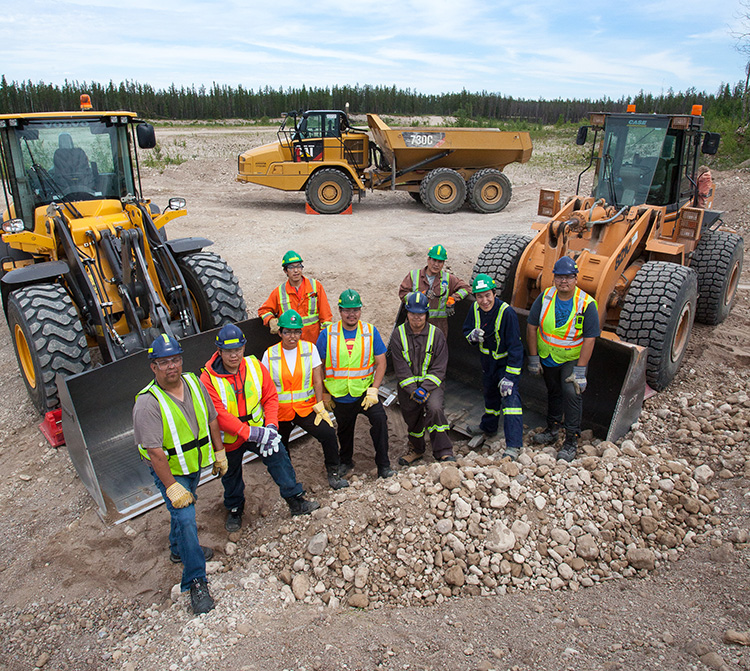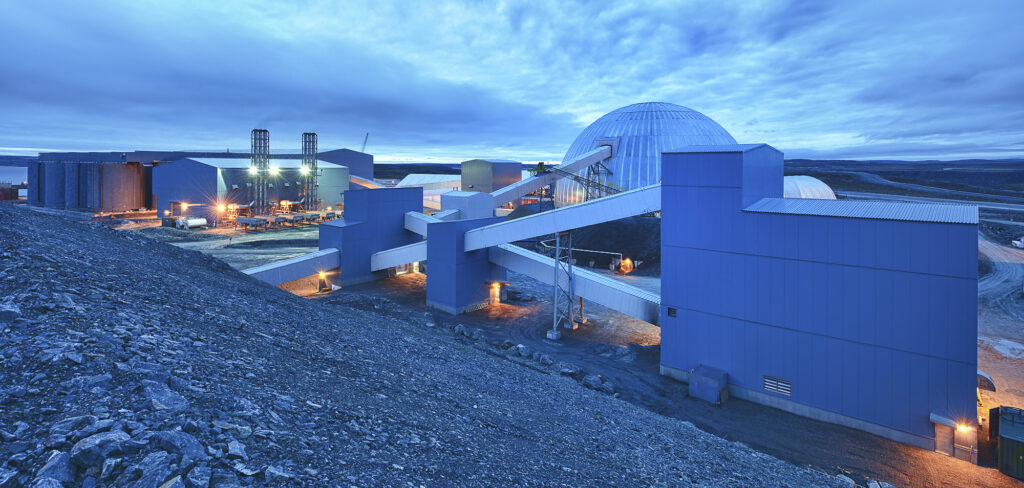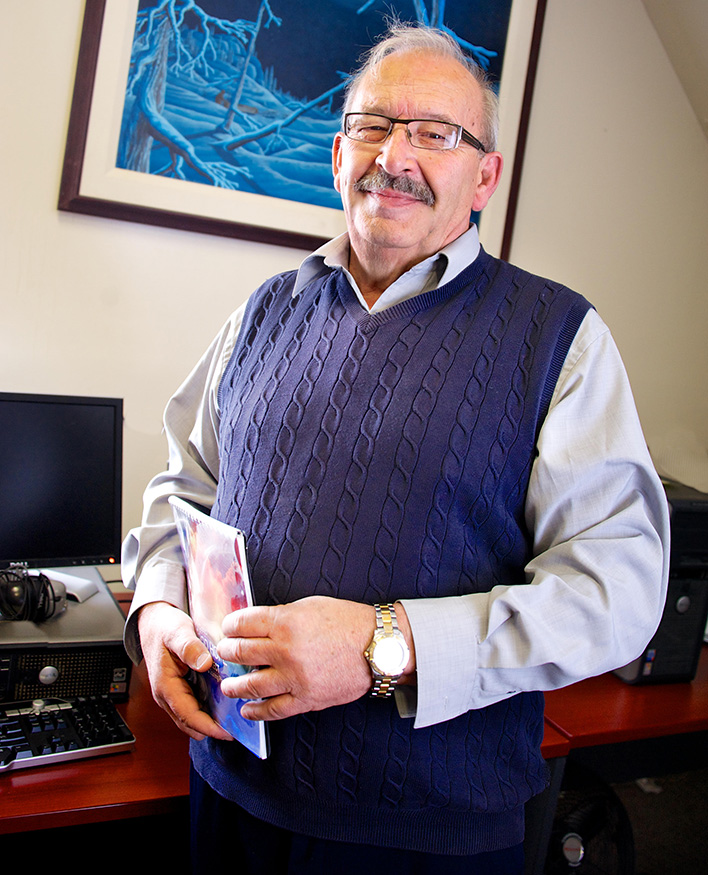Upwardly Mobile: The New Northern Middle Class
Sustained mining development and long-term jobs are having a positive impact on the economic well-being of Northerners in the NWT and Nunavut. Just try counting all the new trucks in Baker Lake

If sleek new Lunds and speedy Arctic Cats are one measure of whether northern families are better off these days, look around places like Baker Lake, Behchoko, and Cambridge Bay, three Northern and mainly indigenous communities that are seeing profound changes in the ways their economies are evolving. It’s due in large part to the impact of at least a decade – in the case of Behchoko, more than two decades – of sustained mining and related activities in their regions.
However, there’s more to it, much more, than the boats and snowmobiles afforded by the payrolls of the Ekatis, Hope Bays or Meadowbanks. They signal a new sector emerging in northern society.
“Mining has significantly catalyzed the creation of a middle class in the Aboriginal communities of the north,” Joe Campbell, president of gold exploration company TerraX Minerals Inc., told a parliamentary committee last year.
In a part of Canada that’s been hobbled by decades of boom/bust development, crippling social ills and over-dependence on government, the notion of a stable middle class is welcome. Yet for some, the new prosperity manifests itself in different ways.
Just what is ‘the middle class’? Politicians and economists have long tried to pin it.
“It’s common to most Canadians from all backgrounds, who believe in working hard to get ahead and hope for a better future for their children,” said Marc Garneau, Transport Canada minister, speaking in the House of Commons this September. Garneau added that middle-class families have “…adequate housing and health care, educational opportunities for their children, a secure retirement, job security, and adequate income for modest spending on leisure pursuits.”
The American economist, Diana Farrel, suggests that the middle class, after paying for essentials like housing, food, transportation and taxes, still has a third of its income left for discretionary spending. In Canada, that would peg someone earning in the range of $36,000 to $95,000 a year as ‘middle class’, where almost 48 percent of Canadians fit, according to a 2015 Organization for Economic Cooperation and Development report.
Speaking to the House of Commons Standing Committee on Natural Resources in September, 2016, Joe Campbell said more than 25 years of diamond exploration and mining in the NWT has enabled aboriginal communities to advance through job and business creation. “Mining is the North’s economic advantage and, as a result, today is the largest private sector contributor to the GDP in both the NWT and Nunavut,” said Campbell. Mining accounted for $602.9 million, or 16.2 percent of GDP in NWT and $891.5 million, or 17.5 percent in Nunavut, he said, noting the millions of dollars in mining taxes and royalties flowing not only to federal coffers but to territorial, Aboriginal and Inuit governments in both the NWT and Nunavut.
In both territories, employment numbers are up substantially, especially for indigneous hires which number about half of total northern employees, and personal income has increased as much as 50 percent in Nunavut and a more modest 20 percent in the NWT.
Driving around Baker Lake? Good luck finding a parking spot among all the new trucks bought by locals who work at Agnico Eagle’s Meadowbank gold mine, said Patrick Tagoona, president of Nunavut Investments Ltd. Speaking at the Nunavut Mining Symposium in Iqaluit in April of this year, Tagoona credits Agnico with turning his once impoverished community around since the mine opened in 2008. “Meadowbank has literally created a new middle class,” said Tagoona “There are new opportunities that didn’t exist before.”
Nunavut Senator Dennis Patterson shares the enthusiasm for the changes he’s witnessing across Nunavut. “I’m very sure that there is a new middle class in Nunavut. It’s happening everywhere,” said Patterson, in a telephone interview. “Every region is benefitting.” Along with the mandatory requirement for implementing Inuit Impact Benefit Agreements, Patterson says it’s the enlightened corporate social and environmental attitude among today’s miners that’s behind the shift. “I do believe that the mining companies are genuinely committed to maximizing northern and Inuit employment. They are smart enough to know this is good business,” he says.
Patterson, who came to Iqaluit in 1975 as a young legal aid lawyer and later served as MLA and Premier of the then-NWT, says his early exposure to mining was rough. As a government minister, he struggled with the dark days of the strike and the murders at Giant Mine in Yellowknife in 1992. “Mining companies [then] were so arrogant and cavalier about their social and environmental obligations. It’s a new era now. I’m so impressed with these companies,” he says. “Agnico Eagle is a really good example of the way we’re growing in Nunavut.”
Walter Morey, general manager of Kissarvik Co-op’s hotel and store in Rankin Inlet since 2005, is slightly less sanguine about Agnico Eagle’s new project, the Meliadine mine, now under construction 25 km from the community. “It’s kind of a mixed bag,” Morey says. “Since Meliadine came on stream, we’re finding the labour pool is shrinking. It’s hard to get reliable people to come to work.”

Meliadine is Agnico Eagle’s second, and largest, gold project in the Kivalliq region. With Meliadine’s production slated for late 2019, construction alone saw some 380 workers on site this summer, some from communities across the Kivalliq. And that’s one of the upsides, says Morley. The way Agnico is building its own pool of reliable, skilled miners means the mine is gradually getting a better and better workforce.
Morley says that Rankin Inlet, as the Kivalliq’s hub, has consistently had a relatively well-off population. “We’re seeing quite a bit of prosperity here,” he says, adding that he’s selling more fresh produce and every shipping barge has another fleet of new trucks coming in. He’s very encouraged that this year could see some 60 high school students graduating. “That’s quite amazing for Rankin. It could be a record year,” he says. “Maybe the knowledge that there are opportunities for people who finish, that might be motivating it.”
Substance abuse, often cited as endemic across the North, doesn’t seem to be any bigger a problem even with the mine’s paycheques, Morey observes. “It gives people who have issues more cash to pursue what they’re doing, but I don’t know if it really draws extra people into it.”
By the mid-1980s, as the Giant and Con gold mines were sunsetting after 60 years, Yellowknives Dene elders were asking, what lies ahead? “I always remember one of the elders saying, well, do like the white guys – start a corporation!” recalls Jonas Sangris, now 69, who served as Chief of the Yellowknives Dene First Nation (YKDFN) from 1985 to 1999.
In 1988, seeded by a $15,000 start-up grant from the NWT Government, they created the Det’on Cho Corporation. The timing couldn’t have been better; three years later, diamonds were discovered north of Yellowknife. Sangris figured it would be a good thing, but only if one fundamental change was made. “One damn thing I’m going to make sure, we’re going to get something for our land!” he recalls saying at that time. It was a bold and transformative declaration. BHP Billiton, then the builders and majority owners of the Ekati mine, (now Dominion Diamonds) and the Yellowknives cut an Impact Benefit Agreement within months. It proved to be an important anchor for the new Det’on Cho venture.
That company has since grown into a powerhouse employer and contractor with 15 diverse subsidiaries and joint ventures, delivering services and goods to the mining, security, transportation, construction and health care sectors. In 2016/17, Det’on Cho generated over $51.8 million in revenue and employed 195 fulltime workers, including 20 Yellowknives Dene First Nation members and dozens more during seasonal construction.
Sangris doesn’t think the mining economy has made big changes in Yellowknives families. “The younger guys are better at controlling the finances now. It’s more stable now,” says Sangris. “Drive around the community. They’ve got boats, trucks, better housing.” He discounts the notion of a rising conventional middle class among his people, but recognizes that some of its values are taking hold. “My son told me the other day, ‘Dad, I know you didn’t put money away for me. But I have to do that for my kids.’ So the young guys are starting to think like that now.”

Dan Marion, the former three-term mayor of Behchoko(formerly Rae), credits the Colomac Gold Mine’s hiring, at first reluctantly, of a handful, then dozens, of Tlicho workers in 1990, as their first tangible step into the mining economy. A few years later, with the arrival of the Australian giant BHP and its Ekati mine, Tlicho were among its first hires. “It took an outside company from Australia to show that there was value in hiring locally!” he says. “Fathers, brothers, and uncles opened the doors for other family members to work there. It wasn’t so intimidating any more to work at a mine away from home,” says Marion. He figures about 400 Tlicho work, or have worked, in the diamond industry over the past 25 years.
Viewed through the Tlicho cultural lens, Marion says their new wealth is used communally, not individually.“[That mine worker] has brothers and sisters and an extended family of maybe 30. He’s using that boat to harvest country food that he shares with them, and while he’s on rotation at the mine, his uncle borrows the boat and does the same. “It only takes one or two people working at the mine, to make the whole extended family a little more prosperous.”
If a thriving middle class is the driver of a prosperous society, what is the engine for the middle class? Many would argue that a stable, diverse and growing economy is at the core. It’s the promise of new opportunity, as Walter Morey says of Rankin Inlet’s high school graduates, that helps build futures.
Today, in just about every region of the NWT and Nunavut, there is significant promise of a renewed mining economy. There are three operating mines in both territories, all of them training and employing a healthy percentage of indigenous workers. And the future is looking good for continued exploration and new or expanding mining operations. Recent announcements show promise for a prosperous future:
Dominion Diamonds (recently purchased by American company The Washington Group) plans to add 12 years to Ekati’s life (to 2041) with the addition of the Fox Deep and Misery Deep ore bodies.
Gahcho Kué could outlive its forecast 12-year life (to 2029) with two more kimberlites still to be developed. Mountain Province Diamonds, 49 percent owner, states a vision to be a 20-year-plus producer. Agnico Eagle will invest $1.2 billion to bring two more major gold deposits on stream in the next two years: by 2019, ore from Amaruq will be processed at the Meadowbank mine; and also by 2019, the Meliadine project will be ready for production, with a projected mine life of 14 years and a workforce of about 1000 workers.
TMAC, south of the Coronation Gulf from Cambridge Bay, has two more deposits, Madrid and Boston, to develop in addition to Doris North that poured its first gold early in 2017. The expected resource to date is 3.5 million ounces of gold and mine life is expected to be 20 years.
Baffinland Iron Mines has re-energized its original mine plan and plans to add a 100 km railway and a new port capable of loading larger ships, to increase production from the Mary River iron mine.
Exploration, after almost a decade of investor drought, is coming back to the North. Here too is renewed promise:
Peregrine Diamonds has identified more than 60 kimberlites at its Chidliak project, northeast of Iqaluit, ranking it among the world’s top diamond prospects.
Kennady Diamonds, neighbor to the Gahcho Kué mine, is continuing drilling programs to prove up the grade and tonnage of promising kimberlites on its lease blocks.
Canadian Zinc had added to the resource amount at its Prairie Creek Mine, which will increase daily throughput and the mine life to 15 years. The company is waiting for permits and licenses for its proppsed 184 km all-season road from the mine to the Liard highway.
On the south side of Great Slave Lake Darnley Bay Resources, renamed Pine Point Mining, is planning to revive the lead-zinc operation at Pine Point near Hay River, formerly operated by Cominco and shut down in 1987.
TerraX Minerals’ Yellowknife City Gold Project, rated as one of Canada’s top ten advanced gold prospects, may yet restore the city’s once thriving gold industry.
Sabina Gold & Silver’s Back River project received a positive recommendation from the Nunavut Impact Review Board to continue project development, reversing last year’s negative recommendation. Sabina completed 10,000 m of diamond drilling and in September announced the discovery of a new high-grade mineralized zone.
All of these are clear and welcome evidence that mining, and the significant spin-off wealth it creates, will continue to anchor a brightening future for northern families.

